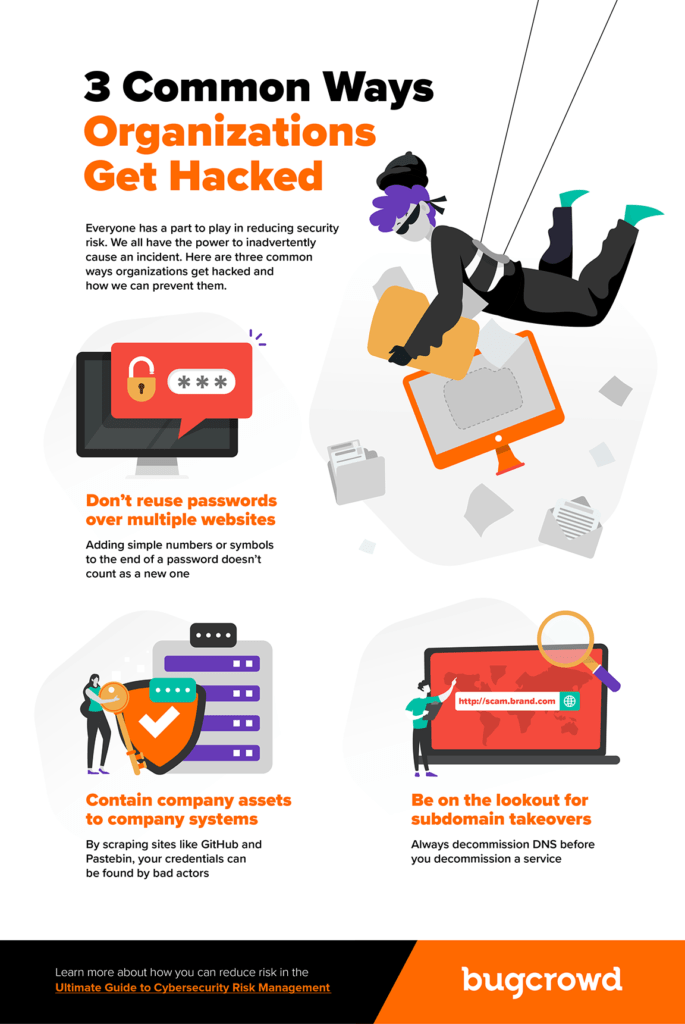When it comes to security teams, one of the biggest priorities is reducing risk. A big part of reducing risk is creating a cybersecurity risk management strategy. As the world becomes more reliant on digital technology, risk management is becoming a more central part of every organization’s operations. Adversaries are becoming increasingly sophisticated, making risk management crucial to every organization’s duties to customers and stakeholders.
An element of any risk management strategy is an awareness of potential vulnerabilities and opportunities for bad actors to gain access to your systems. This infographic outlines three common ways organizations get hacked and how to prevent these mistakes.

Like with all things in the world of cybersecurity, there are no guarantees. Just like how no amount of auto insurance can guarantee you won’t get into a car accident, no organization can completely eliminate every vulnerability in their system or block all cyberattacks.
Cybersecurity risk management helps organizations address the risks that are of most potential impact on their operations. The better your information about the threats most likely to impact your organization and the vulnerabilities that exist in your infrastructure, the better you can reduce risk and optimize outcomes in the event of a security incident.
To learn more about reducing risk, we recommend checking out our new report, The Ultimate Guide to Cybersecurity Risk Management.




